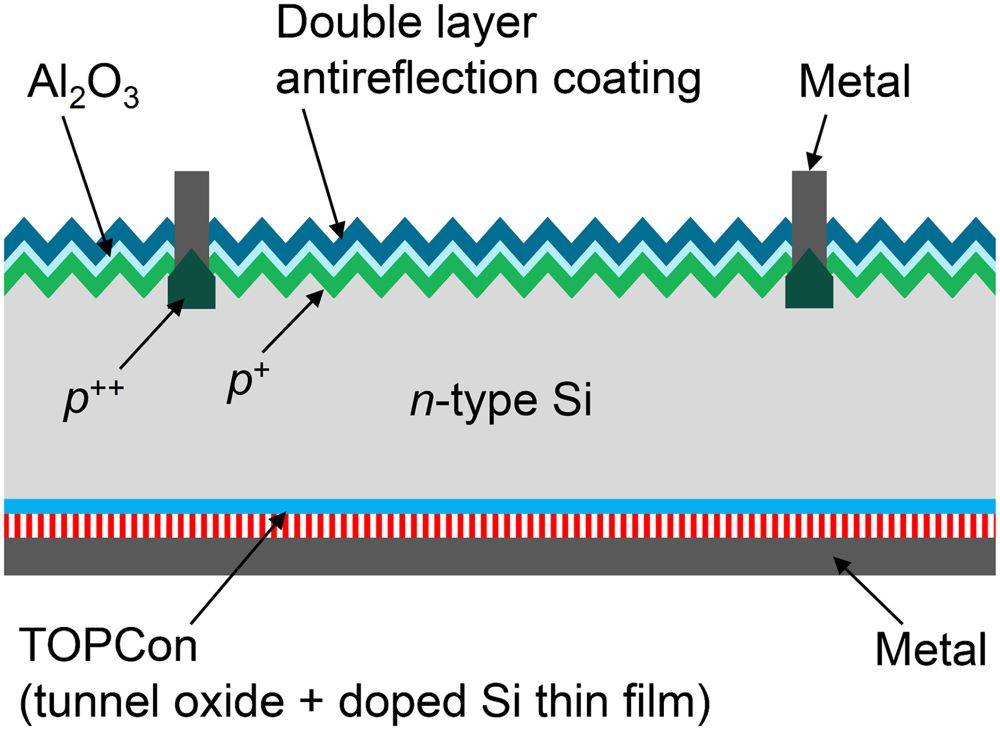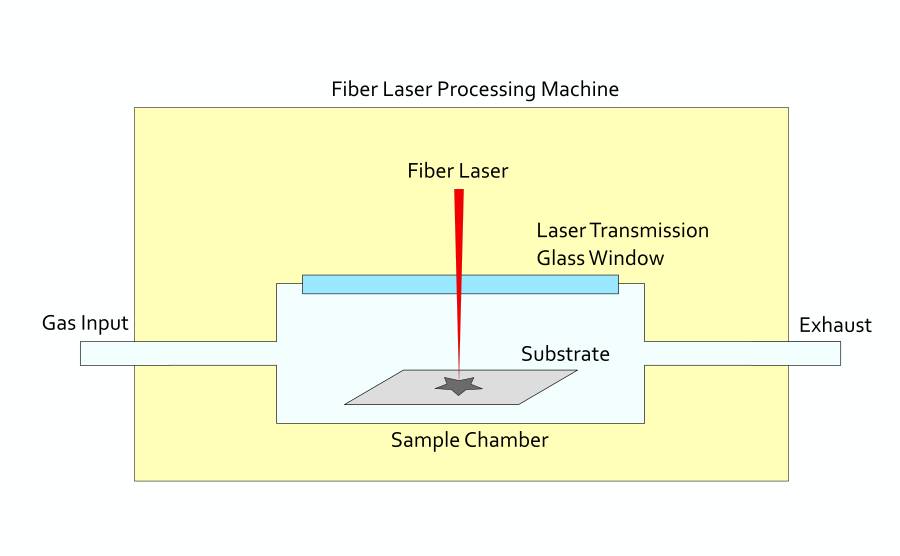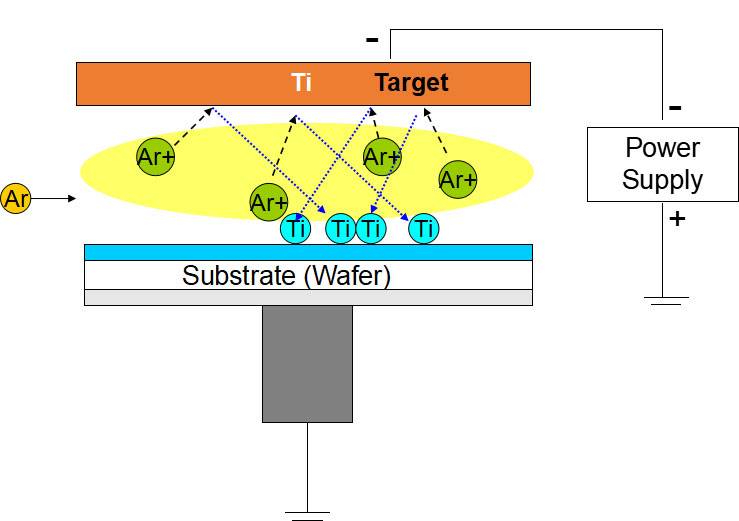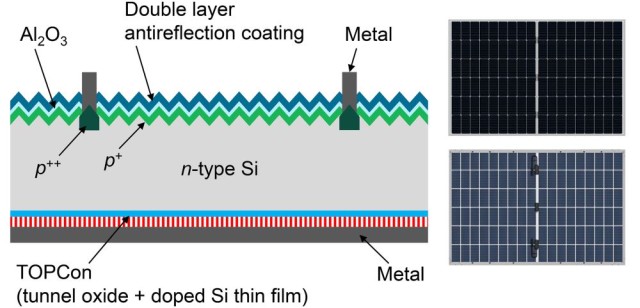Методы осаждения пассивирующих слоев тонких пленок
Основной процесс подготовки ячеек TOPCon
Процесс подготовки ячеек TOPCon представляет собой тщательную последовательность этапов, каждый из которых имеет решающее значение для общей эффективности и производительности конечного продукта. Этот процесс начинается с очистки и распушивания обеспечивая отсутствие на поверхности кремниевой пластины загрязнений, которые могут помешать выполнению последующих этапов. После этого выполняется диффузия бора с лицевой стороны для внедрения атомов бора в решетку кремния, что улучшает электрические свойства ячейки.
Далее удаление BSG и травление с обратной стороны для очистки задней поверхности и подготовки ее к дальнейшей обработке. Затем следует подготовка оксидного слоя для пассивации контактов где наносится оксидный слой для пассивации поверхности кремния и снижения рекомбинационных потерь. Сайт осаждение глинозема с лицевой стороны обеспечивает дополнительный слой защиты и пассивации.
В дальнейшем осаждение нитрида кремния с лицевой и обратной стороны осуществляется с помощью химического осаждения из паровой фазы (CVD), что является ключевым этапом процесса. CVD является основным технологическим звеном в этой последовательности, поскольку обеспечивает равномерное и высококачественное осаждение нитрида кремния, который имеет решающее значение для пассивации и антиотражающих свойств ячейки. Процесс CVD включает в себя химическую реакцию газовых смесей при повышенной температуре, в результате чего на кремниевой пластине осаждается твердая пленка.
После осаждения нитрида кремния процесс продолжается трафаретная печать для нанесения проводящих паст для формирования электрических контактов. Затем следует спекание которое сплавляет пасты с кремнием, создавая надежные электрические соединения. Последние этапы включают тестирование и сортировка чтобы убедиться, что каждая ячейка соответствует требуемым стандартам производительности перед интеграцией в модули.
Таким образом, процесс подготовки ячеек TOPCon представляет собой сложную, но высококонтролируемую последовательность этапов, в которой CVD играет центральную роль в достижении желаемых пассивационных и эксплуатационных характеристик.

Классификация по методу формирования пленки
Процесс осаждения тонкой пленки пассивирующего слоя подразделяется на два основных метода в зависимости от способа формирования пленки: физическое осаждение из паровой фазы (PVD) и химическое осаждение из паровой фазы (CVD). Каждый метод имеет свои уникальные механизмы и области применения в фотоэлектрической промышленности.
PVD подразумевает физический перенос материала от источника к подложке, как правило, в условиях вакуума. Этот метод включает в себя такие техники, как испарение, напыление и осаждение ионным пучком. PVD известен своей способностью создавать высококачественные, плотные пленки с отличной адгезией к подложке. Однако этот метод часто требует более сложного оборудования и может быть менее эффективным для крупномасштабного производства по сравнению с CVD.
С другой стороны, CVD основан на химических реакциях между газами для нанесения твердой пленки на поверхность кремниевой пластины. Этот метод подразделяется на несколько подкатегорий в зависимости от условий реакции, включая CVD при атмосферном давлении (APCVD), CVD при низком давлении (LPCVD), CVD с усилением плазмы (PECVD), CVD с плазмой высокой плотности (HDPCVD) и осаждение атомных слоев (ALD). Среди них LPCVD и PECVD занимают особое место в процессе производства ячеек TOPCon благодаря своей эффективности и масштабируемости.
Преобладание CVD в отрасли подчеркивается более высокой долей используемого технологического оборудования CVD. Это в значительной степени объясняется способностью CVD более эффективно справляться с крупномасштабным производством, его адаптируемостью к различным клеточным процессам и более низкими эксплуатационными расходами по сравнению с PVD. Несмотря на более высокие первоначальные инвестиции в оборудование CVD, долгосрочные преимущества с точки зрения скорости производства и экономической эффективности делают его предпочтительным выбором для многих производителей.
В целом, несмотря на то что и PVD, и CVD имеют свои достоинства, доминирование CVD в процессе осаждения тонких пленок пассивирующего слоя свидетельствует о его эффективности и пригодности для крупномасштабного производства фотовольтаики.
Физическое осаждение из паровой фазы (PVD)
Физическое осаждение из паровой фазы (PVD) - важнейший процесс в технологии тонких пленок, включающий в себя преобразование материала из твердого состояния в парообразное и последующее повторное осаждение на подложку. Этот метод обычно применяется в условиях низкого давления газа или плазмы, что облегчает формирование тонких пленок на различных подложках. Основные методы PVD включают испарение и напыление Каждый из них имеет свои механизмы работы и области применения.
Испарение это процесс, при котором исходный материал нагревается до температуры испарения в вакуумной среде. В результате нагрева материал превращается в пар, который затем конденсируется на подложке, образуя тонкую пленку. Этот метод особенно эффективен для материалов с низкой температурой плавления и обычно используется для нанесения металлов и некоторых диэлектрических материалов.
В отличие от, напыление В плазме исходный материал бомбардируется ионами, как правило, аргоновыми. В результате ионной бомбардировки атомы выбиваются из исходного материала, образуя пар, который впоследствии осаждается на подложку. Напыление славится своей способностью осаждать широкий спектр материалов, включая материалы с высокой температурой плавления и сложным составом, что делает его универсальным выбором для различных промышленных применений.
Процессы PVD незаменимы при производстве изделий, требующих точных и функциональных тонких пленок, например, в электронной и оптической промышленности. Возможность контролировать параметры осаждения, такие как температура, давление и условия плазмы, позволяет создавать пленки с определенными механическими, оптическими, химическими или электронными свойствами. Благодаря такой точности PVD является краеугольным камнем в разработке передовых технологий и высокопроизводительных компонентов.
Химическое осаждение из паровой фазы (CVD)
Химическое осаждение из паровой фазы (CVD) - это сложный метод вакуумного напыления, используемый для получения высококачественных и высокоэффективных твердых материалов, часто применяемых в полупроводниковой промышленности для осаждения тонких пленок. Процесс включает в себя воздействие на кремниевую пластину (подложку) одного или нескольких летучих прекурсоров, которые вступают в химические реакции и/или разлагаются на поверхности подложки, образуя желаемую пленку. В результате этих реакций обычно образуются летучие побочные продукты, которые впоследствии удаляются потоком газа в реакционной камере.

Методы CVD широко классифицируются на основе условий реакции, таких как давление и тип прекурсора. Эта классификация включает:
- CVD при атмосферном давлении (APCVD): Проводится при атмосферном давлении.
- CVD при низком давлении (LPCVD): Работает при пониженном давлении для повышения однородности и качества пленки.
- CVD с усилением плазмы (PECVD): Использование плазмы для облегчения химических реакций при более низких температурах.
- Высокоплотное плазменное CVD (HDPCVD): Используется плазма высокой плотности, обеспечивающая превосходные свойства пленки.
- Атомно-слоевое осаждение (ALD): Последовательный, самоограничивающийся процесс, при котором пленки осаждаются по одному атомному слою за раз.
Каждый вариант CVD обладает уникальными преимуществами и выбирается в зависимости от конкретных требований процесса изготовления полупроводников, таких как однородность пленки, скорость осаждения и температурные ограничения.
CVD не только играет ключевую роль в производстве полупроводников, но и находит применение в микрофабриках для осаждения различных материалов, включая диоксид кремния, карбид, нитрид и оксинитрид, а также такие современные материалы, как углеродные нанотрубки и графен. Универсальность и точность CVD делают его незаменимой технологией в области осаждения тонких пленок.
Разновидности процесса TOPCon
LPCVD (осаждение из паровой фазы низкого давления)
LPCVD, или химическое осаждение из паровой фазы при низком давлении, - это сложный термический процесс, используемый для осаждения тонких пленок из газофазных прекурсоров при субатмосферном давлении. Этот метод предполагает использование одного или нескольких газообразных веществ, которые подвергаются реакциям термического разложения при низком давлении. В результате этих реакций на поверхности подложки образуется желаемая пленка. Условия процесса тщательно подбираются таким образом, чтобы скорость роста определялась в первую очередь скоростью поверхностной реакции, которая сильно зависит от температуры.
Контроль температуры в LPCVD осуществляется с высокой точностью, что приводит к исключительной однородности в пределах пластины, от пластины к пластине и от цикла к циклу. Такая точность очень важна для поддержания постоянства качества и свойств осажденных пленок. Низкое давление в LPCVD значительно повышает коэффициент диффузии газа и средний свободный путь в реакционной камере. Это улучшение приводит к улучшению однородности пленки, равномерности удельного сопротивления и возможности заполнения траншеи. Более высокая скорость транспортировки газа в среде низкого давления также способствует быстрому удалению примесей и побочных продуктов реакции с подложки, тем самым подавляя самодопирование и повышая эффективность производства.

Кроме того, LPCVD не требует использования газов-носителей, что существенно снижает вероятность загрязнения частицами. Это делает LPCVD предпочтительным методом осаждения тонких пленок в полупроводниковой промышленности с высокой добавленной стоимостью. Последние достижения в технологии LPCVD направлены на достижение низкого напряжения и многофункциональных возможностей, что еще больше расширяет сферу ее применения и улучшает ее характеристики в различных промышленных условиях.
PECVD (осаждение из паровой фазы с усилением плазмы)
Химическое осаждение из паровой фазы с усилением плазмы (PECVD) - это сложная технология, используемая для нанесения тонких пленок на подложки, в частности в полупроводниковой промышленности. Этот метод использует микроволновую или радиочастотную (РЧ) энергию для локальной генерации плазмы, которая значительно усиливает химические реакции, необходимые для формирования пленки. В отличие от традиционных процессов CVD, требующих более высоких температур, PECVD работает при относительно низких температурах, как правило, в диапазоне от 200 до 500 °C. Такое снижение температуры очень важно для чувствительных к нагреву подложек, таких как полупроводниковые пластины, поскольку сводит к минимуму риск термического повреждения.
Плазма, генерируемая в PECVD, может поджигаться непосредственно вблизи подложки - этот метод известен как метод прямой плазмы. Такая близость обеспечивает эффективное использование реактивных веществ, что приводит к высококачественному осаждению пленки. Однако прямое воздействие плазмы может представлять опасность для чувствительных подложек из-за возможной радиации и ионной бомбардировки, что требует тщательного контроля процесса.
PECVD широко используется для осаждения диэлектрических пленок, таких как SiO₂, Si₃N₄ и SiOxNy. Процесс включает в себя создание плазмы реагирующих газов с помощью радиочастотной энергии, которая способствует химическим реакциям в камере осаждения. Энергия, необходимая для этих реакций, частично обеспечивается за счет нагрева подложки до умеренной температуры, обычно ниже 350°C, а частично - за счет самой плазмы. Такой двойной источник энергии повышает эффективность и качество осаждаемых пленок.
Пленки, полученные методом PECVD, универсальны и выполняют различные важные функции в полупроводниковых устройствах. В частности, они служат диэлектриками конденсаторов, химическими пассивирующими слоями, электрическими изоляторами, масками для реактивного ионного травления и оптическими антиотражающими покрытиями. Примечательно, что системы PECVD обладают такими передовыми возможностями, как контроль напряжения, высокая однородность, настраиваемый коэффициент преломления и способность создавать конформные пленки SiNₓ, что делает их предпочтительным выбором для многих современных процессов производства полупроводников.
PEALD+PECVD (осаждение атомарных слоев с усилением плазмы)
PEALD+PECVD представляет собой синергетический подход, объединяющий точность и контроль атомно-слоевого осаждения (ALD) с эффективностью и универсальностью плазменно-усиленного химического осаждения из паровой фазы (PECVD). Эта гибридная технология использует самоограничивающуюся природу ALD, которая обеспечивает равномерное и конформное осаждение пленки на атомарном уровне, и одновременно использует химические реакции PECVD, запускаемые плазмой, для ускорения процесса осаждения и улучшения свойств материала.
В PECVD плазменная среда обеспечивает необходимую энергию для химических реакций, которые приводят в движение процесс осаждения. Эта плазма обычно генерируется с помощью радиочастотной (RF) или микроволновой энергии, работая при давлении от 2 до 10 Торр и температуре подложки от 200 до 400°C. Низкотемпературный режим работы PECVD особенно выгоден, позволяя использовать чувствительные к температуре подложки, которые в противном случае пострадали бы от более высоких температур, требуемых в других методах CVD.
В сочетании с ALD способность PECVD работать при низких температурах становится еще более значимой. ALD, традиционно требующая точного контроля температуры и времени импульса реактива, выигрывает за счет энергии плазмы, повышая реакционную способность прекурсоров и потенциально сокращая общее время процесса. В результате такого сочетания получаются пленки, которые не только отличаются высокой конформностью, но и обладают превосходными механическими и электрическими свойствами.
Области применения PEALD+PECVD обширны, особенно в полупроводниковой и фотоэлектрической промышленности. Например, при производстве солнечных батарей эта технология может использоваться для нанесения диэлектрических пленок, таких как SiO2, Si3N4 и SiOxNy, которые имеют решающее значение для получения эффективных пассивирующих и антиотражающих покрытий. Эти пленки необходимы для повышения общей эффективности и производительности солнечных батарей, что делает PEALD+PECVD ключевой технологией в развитии решений в области возобновляемых источников энергии.
Кроме того, конформный и однородный характер пленок, осажденных с помощью PEALD+PECVD, делает их идеальными для использования в различных микроэлектронных приложениях, включая диэлектрики конденсаторов, химические пассивирующие слои, электрические изоляторы и маски для реактивного ионного травления. Возможность точного контроля толщины и однородности пленки на атомном уровне обеспечивает соответствие этих пленок жестким требованиям современных полупроводниковых устройств.
Таким образом, PEALD+PECVD не только сочетает в себе лучшие качества ALD и PECVD, но и открывает новые возможности для инноваций в технологиях осаждения тонких пленок. Сочетая точность ALD с эффективностью PECVD, этот гибридный метод предлагает универсальный и мощный инструмент для следующего поколения полупроводниковых и фотоэлектрических устройств.
PVD (физическое осаждение из паровой фазы)
Физическое осаждение из паровой фазы (PVD) - это сложная технология, используемая для нанесения тонких пленок на различные подложки с помощью физических процессов в условиях вакуума. Этот метод предполагает испарение твердого или жидкого материала, который затем переносится в виде пара через контролируемую среду, обычно вакуум или газообразную или плазменную среду низкого давления. Попадая на подложку, испаренный материал конденсируется, образуя тонкую пленку.
Испаряемый материал может быть элементом, сплавом или соединением, что обеспечивает универсальность типов пленок, которые могут быть созданы. Примечательно, что некоторые процессы PVD позволяют осаждать сложные материалы путем реактивного осаждения. При этом происходит взаимодействие осаждаемого материала с газами в среде осаждения или с сопутствующими материалами, например, образование нитрида титана (TiN) или карбида титана (TiC).
Процессы PVD известны своей способностью создавать пленки толщиной от нескольких нанометров до тысяч нанометров. Эти процессы не ограничиваются однослойными пленками; они также могут использоваться для создания многослойных покрытий, толстых отложений и даже отдельно стоящих структур. Высокая чистота и эффективность пленок, полученных методом PVD, делает их очень востребованными для широкого спектра применений, зачастую превосходя по своим характеристикам пленки, полученные другими методами осаждения.

К основным методам в категории PVD относятся напыление и термическое испарение. При напылении высокоэнергетические частицы бомбардируют материал мишени, в результате чего атомы выбрасываются и осаждаются на подложке. Термическое испарение, с другой стороны, предполагает нагрев исходного материала до испарения, после чего пар конденсируется на подложке. Оба метода обеспечивают транспортировку и накопление материала атом за атомом или молекула за молекулой в вакууме, в результате чего получаются пленки исключительной чистоты и эффективности.
Сравнение технологий
Преимущества и недостатки LPCVD
Химическое осаждение из паровой фазы при низком давлении (LPCVD) обладает рядом преимуществ, особенно в плане эффективности, выхода и производственных мощностей. Одной из его отличительных особенностей является сильная способность к ступенчатому покрытию, что делает его идеальным для сложных трехмерных структур, обеспечивая хорошее покрытие боковых стенок. Эта способность имеет решающее значение в процессе производства фотоэлектрических элементов, особенно для производства элементов TOPCon. Кроме того, LPCVD позволяет хорошо контролировать состав и структуру благодаря возможности осаждения при более низких температурах, что благоприятно для сохранения химического состава и микроструктуры пленки.
Однако LPCVD не лишен сложностей. Процесс требует поддержания низкого давления, что приводит к относительно высокому потреблению энергии. Использование многочисленных кварцевых расходных материалов в процессе LPCVD также приводит к увеличению эксплуатационных расходов. Кроме того, скорость осаждения в LPCVD медленнее, чем в плазменном химическом осаждении из паровой фазы (PECVD), что ограничивает его производительность. Еще одной существенной проблемой является феномен обходного покрытия, когда осаждение происходит в нецелевых областях, что влияет на консистенцию и качество конечного продукта.
Несмотря на эти недостатки, высокое качество пленки LPCVD, достигаемое за счет низкого давления, остается ключевым преимуществом, способствующим улучшению однородности и общего качества пленки. Такой баланс плюсов и минусов делает LPCVD критически важной технологией в фотоэлектрической промышленности, особенно в сложном процессе производства ячеек TOPCon.
Преимущества и недостатки PECVD
PECVD (Plasma-Enhanced Chemical Vapor Deposition) обладает рядом преимуществ, которые делают его предпочтительным методом для различных клеточных процессов, включая PERC, TOPCON и HJT. Одним из его основных преимуществ является высокая скорость осаждения которую он обеспечивает. Такая эффективность значительно повышает пропускную способность производства, что делает его эффективным решением для крупномасштабного производства. Кроме того, PECVD позволяет легирование in-situ что упрощает процесс, позволяя проводить легирование одновременно с осаждением. Это не только упрощает рабочий процесс, но и снижает вероятность загрязнения.
Сайт низкая температура осаждения PECVD - еще одно ключевое преимущество. Благодаря использованию многоатомного газового разряда этот метод позволяет осаждать сложные пленки при пониженных температурах, что сводит к минимуму термическое повреждение подложки. Это особенно полезно для подложек, чувствительных к высоким температурам, что расширяет спектр материалов, которые могут быть использованы в процессе. Кроме того, PECVD высокая эффективность осаждения объясняется неравномерным распределением электрического поля перед катодом, которое концентрирует химические реакции в зоне катодного падения. Эта локализованная высокоактивная область ускоряет скорость реакции и повышает эффективность осаждения, как показано на примере распределения скорости образования NH3 в DC-PECVD.
Несмотря на многочисленные преимущества, PECVD не лишена недостатков. Одним из них является потенциальная нестабильность осажденных пленок . Пленки, сформированные с помощью PECVD, могут проявлять такие проблемы, как разрыв пленки, что может поставить под угрозу целостность и эксплуатационные характеристики конечного продукта. Кроме того, сложность сложность оборудования для PECVD требует больших усилий по обслуживанию и отладке, что увеличивает эксплуатационные расходы и усложняет процесс. Существует также риск колебания качества пленки из-за нестабильности плазмы, что может повлиять на равномерность и однородность осажденных слоев.
Таким образом, PECVD обладает значительными преимуществами с точки зрения скорости осаждения, упрощения процесса и экономической эффективности, но при этом возникают проблемы, связанные со стабильностью пленки и сложностью оборудования. Эти факторы необходимо тщательно учитывать при выборе PECVD для конкретных клеточных процессов.
Преимущества PEALD+PECVD и PVD
PEALD+PECVD и PVD имеют свои преимущества в области осаждения тонких пленок, особенно в контексте производства фотоэлектрических элементов.
PEALD+PECVD превосходит другие технологии в решении проблемы неоднородности . Сочетая точность атомно-слоевого осаждения (ALD) с эффективностью плазменно-усиленного химического осаждения из паровой фазы (PECVD), эта гибридная технология обеспечивает равномерную толщину и состав пленки на всей подложке. Это очень важно для поддержания постоянных электрических свойств и повышения общей эффективности фотоэлектрических элементов. Низкая температура осаждения PECVD, обычно не превышающая 350°C, обеспечивает минимальную тепловую нагрузку на подложку, что особенно полезно для термочувствительных материалов, таких как пластмассы. Кроме того, высокая эффективность осаждения в PECVD, обеспечиваемая энергичными частицами в плазме, способствует более быстрому и контролируемому формированию пленки.
С другой стороны, PVD отличается тем, что быстрое формирование пленки и многофункциональная модернизация . В отличие от PECVD, основанного на химических реакциях, PVD использует физические процессы, такие как испарение, напыление или ионный пучок для осаждения материала на подложку. Это приводит к быстрому формированию пленки, что делает PVD идеальным решением для задач, требующих быстрого времени выполнения. Кроме того, PVD обладает следующими преимуществами отсутствие обмоточного покрытия что гарантирует отсутствие дефектов в осажденных пленках, которые могут возникнуть из-за механических напряжений. Универсальность PVD также позволяет создавать многофункциональные модификации, позволяющие осаждать сложные многослойные структуры с заданными свойствами.
Однако стоит отметить, что, хотя PVD и PEALD+PECVD обладают этими неоспоримыми преимуществами, они также связаны с более высокой стоимостью оборудования. Сложное оборудование, необходимое для этих передовых методов осаждения, требует значительных инвестиций, что может стать одним из соображений для производителей, балансирующих между стоимостью и производительностью.
Таким образом, хотя и PEALD+PECVD, и PVD обладают уникальными преимуществами при осаждении тонких пленок, их выбор зависит от конкретных требований приложения, включая однородность пленки, скорость осаждения и экономическую эффективность.
Связанные товары
- Наклонная роторная установка для плазменно-усиленного химического осаждения из паровой фазы PECVD
- Система ВЧ-PECVD Радиочастотное плазменно-усиленное химическое осаждение из газовой фазы ВЧ-PECVD
- Оборудование для осаждения из паровой фазы CVD Система Камерная Печь-труба PECVD с Жидкостным Газификатором Машина PECVD
- Наклонная роторная установка для плазменно-усиленного химического осаждения из паровой фазы (PECVD) с трубчатой печью
- Электрохимическая ячейка для спектроэлектролиза в тонком слое
Связанные статьи
- Химическое осаждение из паровой фазы с расширенной плазмой (PECVD): Исчерпывающее руководство
- Пошаговое руководство по процессу PECVD
- Полное руководство по обслуживанию оборудования PECVD
- Почему PECVD необходима для производства микроэлектронных устройств
- Сравнение производительности PECVD и HPCVD при нанесении покрытий














